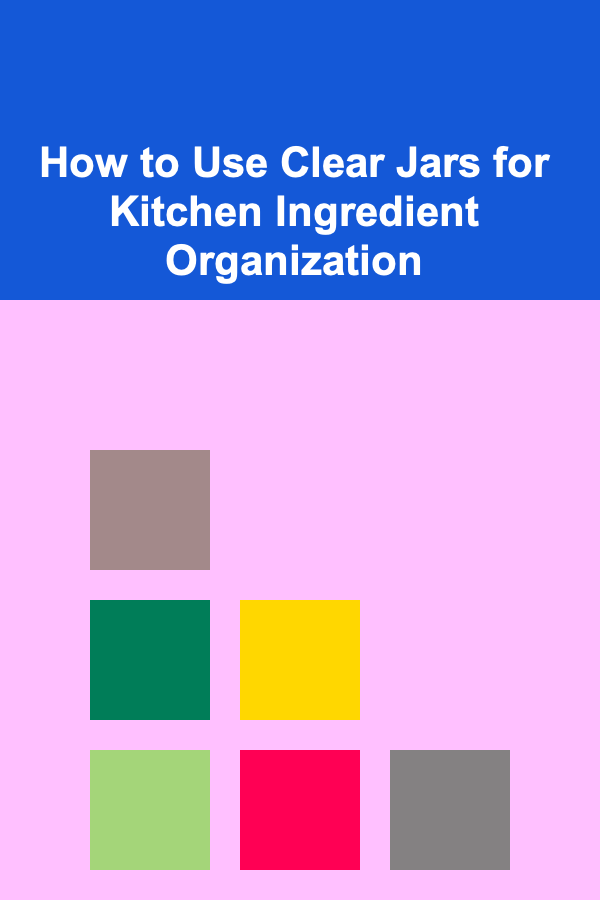
Building a Solar Oven for Outdoor Cooking: A Comprehensive Guide
ebook include PDF & Audio bundle (Micro Guide)
$12.99$8.99
Limited Time Offer! Order within the next:

Harnessing the power of the sun for cooking is not only an environmentally friendly alternative to traditional methods but also a fascinating and rewarding project. A solar oven, a device that utilizes sunlight to heat and cook food, is a relatively simple contraption to build. This comprehensive guide provides a deep dive into the principles, materials, construction process, and usage of solar ovens, empowering you to create your own solar cooking device.
Understanding the Principles of Solar Cooking
Before diving into the construction process, it's crucial to understand the fundamental principles that make solar ovens work. Solar ovens rely on three key mechanisms:
- Concentration: This involves focusing sunlight onto a smaller area. Reflective surfaces, typically aluminum foil or mirrors, are used to direct the sun's rays towards the cooking area, increasing the intensity of the light and heat.
- Absorption: Once the sunlight is concentrated, it needs to be absorbed by a dark-colored surface. Dark colors are excellent absorbers of solar radiation, converting light energy into heat energy. The inside of the solar oven, particularly the cooking pot or inner box, is usually painted black for maximum absorption.
- Insulation: To prevent heat from escaping, the solar oven needs to be well-insulated. Insulation materials, such as cardboard, newspaper, or foam, trap the heat inside the oven, allowing the temperature to rise and cook the food effectively. A transparent cover, often made of glass or plastic, creates a greenhouse effect, further trapping heat and preventing convection.
The greenhouse effect is critical. Shortwave radiation from the sun enters the oven through the transparent cover. This radiation is absorbed by the dark interior, which then re-radiates the energy as longer-wavelength infrared radiation (heat). The glass or plastic cover is largely opaque to infrared radiation, preventing it from escaping and trapping the heat inside.
Choosing the Right Design: Box Oven vs. Panel Oven
There are several designs for solar ovens, but the two most common types are the box oven and the panel oven. Each has its advantages and disadvantages:
Box Oven
The box oven is a fully enclosed structure, typically made from cardboard boxes. It is relatively easy to construct and provides good insulation. The reflective panels are integrated into the box's design.
Advantages:
- Relatively simple to build.
- Good insulation for efficient heat retention.
- Stable and sturdy design.
Disadvantages:
- Can be bulky and less portable.
- May require more materials than a panel oven.
- Can be more challenging to adjust the reflectors for optimal sunlight capture.
Panel Oven
The panel oven consists of a cooking pot enclosed in a transparent bag or container, surrounded by reflective panels that direct sunlight towards the pot. The panels can be adjusted to optimize sunlight capture.
Advantages:
- Lightweight and portable.
- Easy to adjust the reflector angles for optimal sunlight capture.
- Can be constructed with minimal materials.
Disadvantages:
- Less insulation than a box oven.
- Can be less stable, especially in windy conditions.
- The transparent bag or container may require careful handling to avoid damage.
For this guide, we will focus on building a box oven due to its relative simplicity and good insulation properties. However, the principles discussed can be adapted for constructing a panel oven as well.
Materials Needed for a Box Solar Oven
Here's a comprehensive list of materials you'll need to build a basic box solar oven:
- Cardboard Boxes: You'll need two cardboard boxes, one slightly larger than the other. The larger box will form the outer shell of the oven, while the smaller box will house the cooking area. Ensure the boxes are sturdy and in good condition. A good size difference is about 2-3 inches on all sides. For example, an outer box of 24" x 24" x 12" and an inner box of 20" x 20" x 10" would work well.
- Aluminum Foil: A large roll of heavy-duty aluminum foil to line the inside of the inner box and create reflective panels. Shiny side out, of course!
- Black Paint (Non-Toxic): To paint the inside of the inner box and the cooking pot. Black paint absorbs solar radiation effectively. Ensure the paint is non-toxic and food-safe, especially if painting the cooking pot directly. High-temperature barbecue paint is a good option for the cooking pot.
- Insulation Material: Materials like crumpled newspaper, cardboard scraps, fiberglass insulation (handle with care, wear gloves and mask), or polystyrene foam to fill the space between the two boxes and provide insulation. Recycled materials are a great eco-friendly choice. Avoid materials that melt at relatively low temperatures.
- Transparent Cover: A sheet of glass or a clear plastic sheet (e.g., Plexiglas or a heavy-duty oven bag) to cover the top of the inner box. Glass provides better heat retention but is more fragile. Oven bags are a cost-effective and lightweight alternative, but they are less durable and may degrade over time with exposure to high temperatures and UV radiation.
- Cardboard Flaps or Reflectors: Extra pieces of cardboard to create adjustable reflectors that will direct sunlight into the oven.
- Glue or Tape: Strong glue (e.g., construction adhesive) or duct tape to secure the aluminum foil, insulation, and reflectors. Duct tape is readily available and easy to use, but glue provides a more permanent bond. Consider using aluminum foil tape for best results.
- Cooking Pot: A dark-colored cooking pot with a lid. Black enamelware or a dark cast-iron pot works well. Avoid shiny or reflective pots, as they will reflect sunlight rather than absorb it.
- Thermometer (Optional): An oven thermometer to monitor the temperature inside the solar oven. This helps you track the cooking progress and avoid overheating. A high-temperature probe thermometer is ideal for monitoring food temperature as well.
- Tools:
- Scissors or a utility knife (for cutting cardboard and foil).
- Ruler or measuring tape.
- Pencil or marker.
- Paintbrush.
- Safety glasses (especially when cutting cardboard).
Step-by-Step Construction Guide
Now, let's proceed with the construction of the box solar oven. Follow these steps carefully:
- Prepare the Inner Box:
- Paint the inside of the smaller cardboard box with black paint. Apply multiple coats for even coverage. Allow the paint to dry completely between coats.
- Once the paint is dry, line the inside of the box with aluminum foil. Smooth out the foil and secure it with glue or tape. Ensure there are no gaps or wrinkles. The foil will reflect sunlight onto the food.
- Prepare the Outer Box:
- Cut a rectangular hole in the top of the larger cardboard box. The hole should be slightly smaller than the inner box, allowing it to sit inside the outer box with a gap around the sides and bottom.
- Assemble the Oven:
- Place the inner box inside the outer box, centering it within the hole.
- Fill the space between the two boxes with insulation material. Pack the insulation tightly to minimize heat loss.
- Seal the top edges of the outer box with cardboard flaps or tape to prevent heat from escaping.
- Create Reflectors:
- Cut out cardboard flaps or panels to create reflectors. The size and shape of the reflectors will depend on the size of your oven. A good starting point is to create four rectangular reflectors, each approximately half the size of the outer box's top surface.
- Cover one side of each reflector with aluminum foil, securing it with glue or tape.
- Attach the reflectors to the sides of the outer box, angling them inwards to direct sunlight into the inner box. You can use hinges (made from tape or cardboard) to make the reflectors adjustable. Experiment with different angles to maximize sunlight capture.
- Attach the Transparent Cover:
- Secure the transparent cover (glass or plastic sheet) to the top of the inner box. If using glass, be careful to avoid sharp edges. If using an oven bag, secure it tightly around the top edges of the inner box using tape or clips.
- Test and Adjust:
- Place the solar oven in direct sunlight and monitor the temperature inside using an oven thermometer.
- Adjust the reflectors to maximize sunlight capture and achieve the highest possible temperature.
- You may need to experiment with different reflector angles and insulation materials to optimize the oven's performance.
Tips for Optimizing Performance
To get the most out of your solar oven, consider these tips:
- Sunlight is Key: The performance of your solar oven depends heavily on direct sunlight. Choose a location that receives unobstructed sunlight for most of the day. Adjust the oven's position throughout the day to track the sun's movement.
- Dark Cookware: Use dark-colored, thin-walled cookware to maximize heat absorption. Cast iron, enamelware, or dark metal pots work best.
- Preheating: Preheat the solar oven before placing food inside. This will help to speed up the cooking process.
- Sealed Containers: Use sealed containers or tightly covered pots to prevent moisture loss and speed up cooking.
- Minimize Opening: Avoid opening the oven frequently, as this will release heat and slow down the cooking process.
- Wind Protection: Protect the oven from wind, as wind can reduce the oven's temperature. A simple windbreak made from cardboard or fabric can help.
- Altitude Adjustment: Cooking times may need to be adjusted for altitude. At higher altitudes, water boils at a lower temperature, so cooking times may be longer.
- Double Glazing: For enhanced insulation, consider using a double-glazed transparent cover. This involves using two layers of glass or plastic with an air gap between them. This reduces heat loss through conduction and convection.
- Reflector Material: While aluminum foil is a common choice, consider using mirrors for enhanced reflectivity. Mirrors can concentrate sunlight more effectively, leading to higher oven temperatures. However, mirrors are more fragile and require careful handling.
- Experimentation: Solar cooking is a process of experimentation. Try different recipes and techniques to find what works best for your oven and your cooking style.
- Tip: If using cardboard reflectors, consider reinforcing them with a thin layer of wood or plastic for added durability, especially in windy conditions. You can also laminate the aluminum foil onto the cardboard to protect it from tearing.
What Can You Cook in a Solar Oven?
Solar ovens are versatile and can be used to cook a wide variety of foods, including:
- Grains: Rice, quinoa, barley, and other grains cook well in a solar oven.
- Vegetables: Steamed or roasted vegetables are delicious and easy to prepare in a solar oven.
- Beans and Legumes: Solar ovens are ideal for slow-cooking beans and legumes, resulting in tender and flavorful dishes.
- Soups and Stews: Simmering soups and stews in a solar oven allows the flavors to meld together beautifully.
- Breads and Cakes: While it may take longer, you can bake bread, cakes, and cookies in a solar oven. Dark-colored baking pans will improve heat absorption.
- Meats: Meats can be cooked in a solar oven, but it's important to ensure they reach a safe internal temperature to prevent foodborne illness. Use a meat thermometer to monitor the temperature. Slow cooking at lower temperatures can result in incredibly tender and flavorful meats.
- Water Pasteurization: Solar ovens can also be used to pasteurize water, making it safe to drink. Heat the water to 65°C (150°F) for at least 6 minutes to kill harmful bacteria and viruses.
Always remember to monitor the internal temperature of food, especially meats, to ensure they are cooked to a safe temperature. Use a food thermometer to check the temperature in several places. Consult reliable sources for recommended safe cooking temperatures for different types of food.
Safety Precautions
While solar ovens are generally safe to use, it's important to take certain precautions:
- Handle Glass with Care: If using a glass cover, be careful to avoid sharp edges. Wear gloves when handling glass to protect your hands.
- Avoid Overheating: Monitor the temperature inside the oven to prevent overheating. Extremely high temperatures can damage the oven or pose a fire hazard.
- Use Oven Mitts: Always use oven mitts or heat-resistant gloves when handling hot cookware or the solar oven itself.
- Eye Protection: Avoid looking directly at the concentrated sunlight reflected by the reflectors. Prolonged exposure to intense sunlight can damage your eyes. Wear sunglasses or other eye protection when working with the oven.
- Supervise Children: Supervise children when they are near the solar oven to prevent accidents.
- Food Safety: Follow proper food safety guidelines to prevent foodborne illness. Ensure meats are cooked to a safe internal temperature and avoid leaving cooked food at room temperature for extended periods.
Troubleshooting Common Issues
Here are some common issues you might encounter and how to address them:
- Low Temperature:
- Ensure the oven is placed in direct sunlight.
- Adjust the reflectors to maximize sunlight capture.
- Check for gaps or leaks in the insulation.
- Use a dark-colored cooking pot.
- Uneven Cooking:
- Rotate the cooking pot periodically to ensure even heating.
- Use a reflector to direct sunlight onto the shady side of the pot.
- Long Cooking Times:
- Preheat the oven before placing food inside.
- Use sealed containers or tightly covered pots.
- Chop food into smaller pieces to speed up cooking.
- Condensation: If condensation forms inside the oven, wipe it away periodically to maintain optimal performance. Condensation can reduce the amount of sunlight that reaches the food. Ensure adequate ventilation to minimize condensation buildup.
- Reflector Degradation: Over time, aluminum foil reflectors may become dull or torn. Replace them as needed to maintain optimal reflectivity. Consider using a more durable reflector material, such as mirrors or laminated foil, for longer-lasting performance.
Conclusion
Building and using a solar oven is a rewarding and sustainable way to cook food. By understanding the principles of solar cooking, choosing the right materials, and following the construction steps outlined in this guide, you can create your own efficient and eco-friendly cooking device. Experiment with different recipes and techniques, and enjoy the satisfaction of harnessing the power of the sun to prepare delicious meals. Remember to always prioritize safety and follow proper food safety guidelines. Happy solar cooking!
Reading More From Our Other Websites
- [Personal Investment 101] How to Choose the Right Investment Accounts for Tax Efficiency
- [Organization Tip 101] How to Store Fishing Nets Without Taking Up Space
- [Home Holiday Decoration 101] How to Incorporate Unique Holiday Decor for Living Room Spaces Beyond the Tree
- [Home Cleaning 101] How to Clean and Maintain Your Washing Machine
- [Home Maintenance 101] How to Clean and Maintain Your Coffee Maker
- [Organization Tip 101] How to Use Tackle Boxes for Essential Oil Organization
- [Home Holiday Decoration 101] How to Decorate a Fresh Christmas Tree from Home Depot with Ease
- [Organization Tip 101] How to Implement a Regular Garage Maintenance Routine
- [Personal Financial Planning 101] How to Choose the Best Money Management Apps for Your Financial Needs
- [Organization Tip 101] How to Design a Closet System for Kids' Clothes

How to Soundproof Your Doors and Prevent Noise Leaks
Read More
How to Use Clear Jars for Kitchen Ingredient Organization
Read More
How to Use Hooks and Racks for Smart Organization
Read More
Understanding the Philosophy of Happiness
Read More
How to Plan for Back-to-School Success
Read More
How to Create a Grocery Budget Checklist for College Students
Read MoreOther Products

How to Soundproof Your Doors and Prevent Noise Leaks
Read More
How to Use Clear Jars for Kitchen Ingredient Organization
Read More
How to Use Hooks and Racks for Smart Organization
Read More
Understanding the Philosophy of Happiness
Read More
How to Plan for Back-to-School Success
Read More